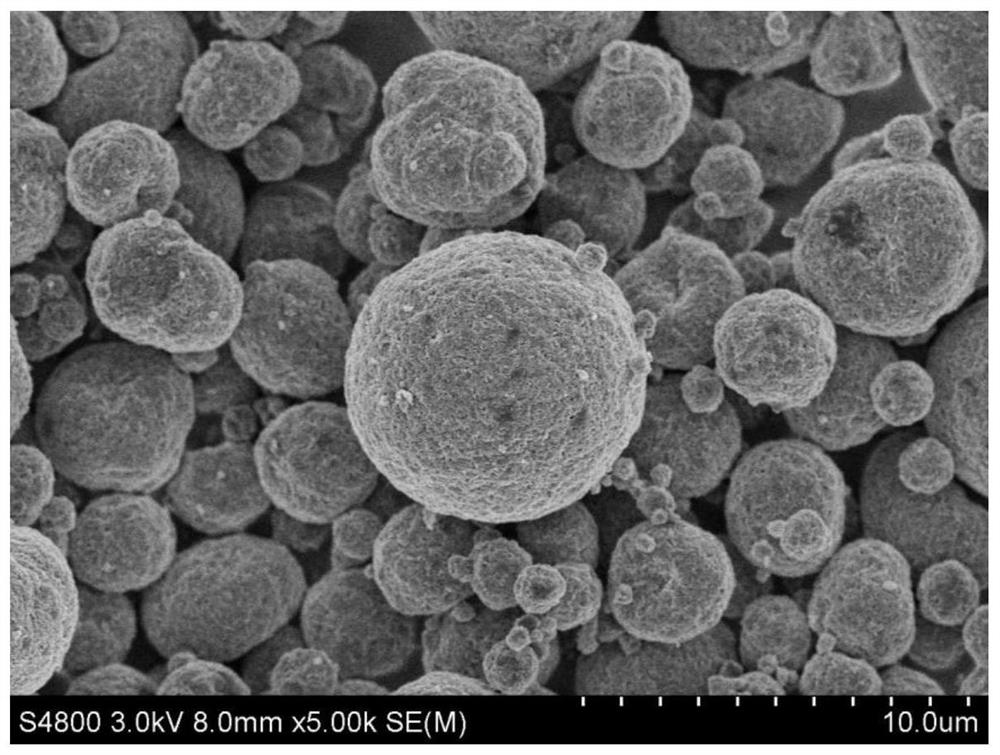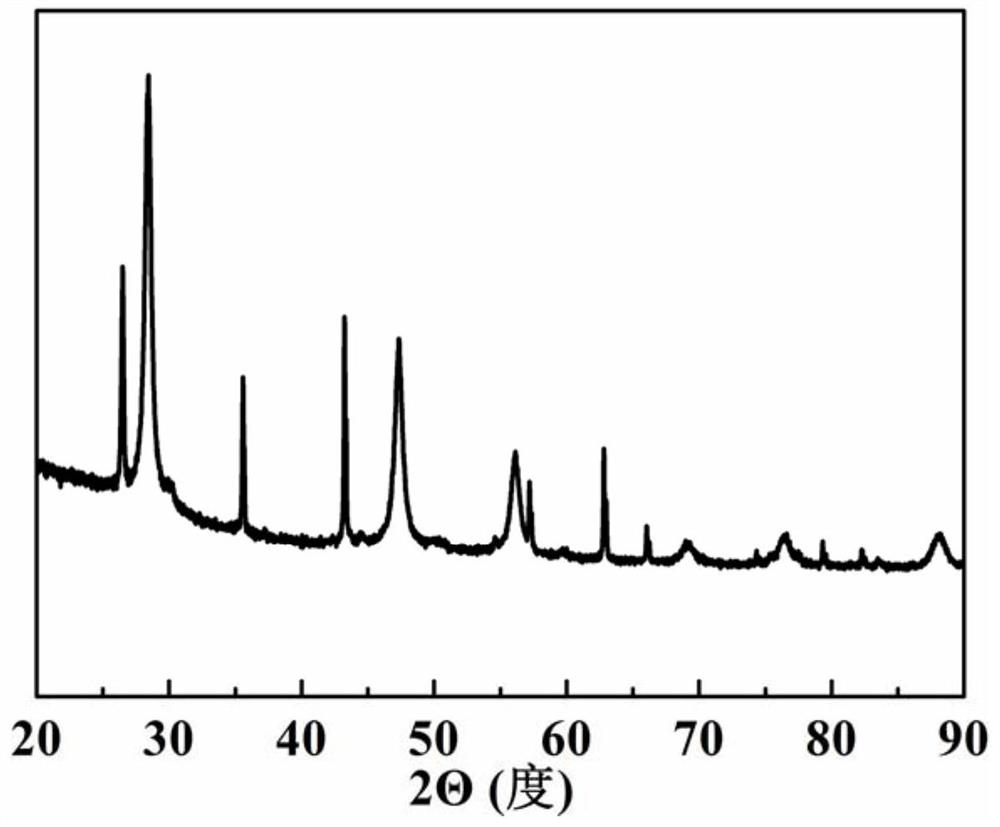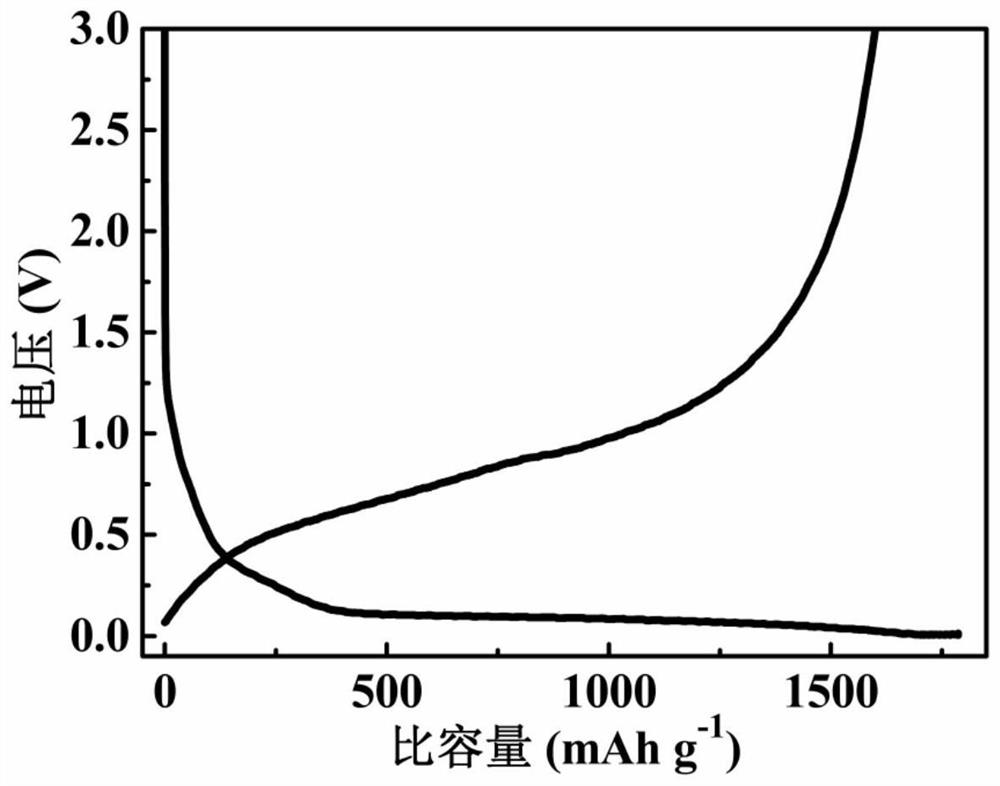Multi-component composite negative electrode material, preparation method thereof and lithium ion battery
A negative electrode material, multi-component composite technology, applied in the direction of negative electrode, battery electrode, secondary battery, etc., can solve the problems of poor effect, achieve high first-time Coulombic efficiency, reduce the formation of SEI film, and increase the ion and electron transmission rate. Effect
- Summary
- Abstract
- Description
- Claims
- Application Information
AI Technical Summary
Problems solved by technology
Method used
Image
Examples
Embodiment 1
[0074] In this embodiment, the multi-element composite negative electrode material is prepared according to the following method:
[0075] (1) Mechanically pulverize flake natural graphite to graphite particles with a median particle size of 10.0-30.0 μm, place it in a ball mill containing 0.01mm zirconia balls and ethylene glycol solvent, and perform ball milling to obtain the median Hollow graphite with a particle size of 1.0-15.0 μm.
[0076] (2) Disperse nano-silicon with a median particle size of 100nm and tetrabutyl titanate at a molar ratio of 4:1 in an ethanol solvent, and after ultrasonic stirring for 0.5h, slowly add the molar ratio of tetrabutyl titanate to the solution It is 1:4 deionized water, after continuing to stir for 20min, add lithium acetate and hollow graphite successively therein, control lithium acetate: tetrabutyl titanate: nano-silicon: the molar ratio of hollow graphite is 0.4:0.5:2: 2. Ultrasonic stirring for 0.5 hours to form a uniform suspension,...
Embodiment 2
[0083] In this embodiment, the multi-element composite negative electrode material is prepared according to the following method:
[0084] (1) Mechanically pulverize flake natural graphite to graphite particles with a median particle size of 10.0-30.0 μm, place it in a ball mill containing 0.01mm zirconia balls and ethylene glycol solvent, and perform ball milling to obtain the median Hollow graphite with a particle size of 1.0-15.0 μm;
[0085] (2) Disperse nano-silicon with a median particle size of 100nm and tetrabutyl titanate in a molar ratio of 4:1 in isopropanol solvent, stir ultrasonically for 0.5h, and slowly add tetrabutyl titanate dropwise into the solution Molar ratio is the deionized water of 1:4, after continuing to stir for 20min, add lithium hydroxide and hollow graphite successively wherein, control lithium hydroxide: tetrabutyl titanate: nano-silicon: the mol ratio of hollow graphite is 0.4: 0.5:2:2, ultrasonically stirred for 0.5h to form a uniform suspensi...
Embodiment 3
[0091] In this embodiment, the multi-element composite negative electrode material is prepared according to the following method:
[0092] (1) Mechanically pulverize flake natural graphite to graphite particles with a median particle size of 20.0-45.0 μm, place it in a ball mill containing 0.01 mm zirconia balls and ethylene glycol solvent, and perform ball milling to obtain the median Hollow graphite with a particle size of 5.0-20.0 μm.
[0093] (2) Disperse nano-silicon with a median particle size of 150nm and tetraisopropyl titanate in a molar ratio of 1:1 in ethylene glycol solvent, stir ultrasonically for 0.5h, and slowly add tetrabutyl titanate dropwise into the solution Deionized water with an ester molar ratio of 1:4, continue to stir for 20 minutes, and then add lithium hydroxide and hollowed graphite to it in turn, and control the molar ratio of lithium hydroxide: tetrabutyl titanate: nano-silicon: hollowed graphite to 0.4 :0.5:2:1.5, ultrasonically stirred for 0.5h...
PUM
| Property | Measurement | Unit |
|---|---|---|
| particle size | aaaaa | aaaaa |
| particle size | aaaaa | aaaaa |
| size | aaaaa | aaaaa |
Abstract
Description
Claims
Application Information
 Login to View More
Login to View More - R&D
- Intellectual Property
- Life Sciences
- Materials
- Tech Scout
- Unparalleled Data Quality
- Higher Quality Content
- 60% Fewer Hallucinations
Browse by: Latest US Patents, China's latest patents, Technical Efficacy Thesaurus, Application Domain, Technology Topic, Popular Technical Reports.
© 2025 PatSnap. All rights reserved.Legal|Privacy policy|Modern Slavery Act Transparency Statement|Sitemap|About US| Contact US: help@patsnap.com



